| As we left the campsite
the following morning we noticed the farm implements dealer across the road
with dozens of new John Deere harvesters ready for the new season. | 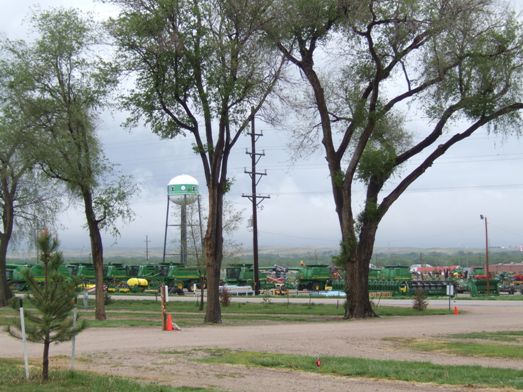 |
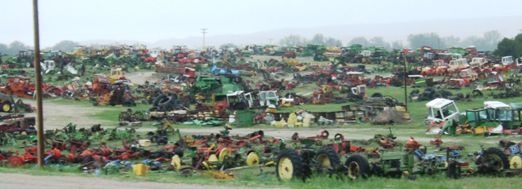 |
Along the road we came across several used machinery dealers with fields of
used tractors and implements in various stages of decay, but this one went
on for ever. |
| But then we were back following
the railroad and watching some of the 70 coal trains each day which haul
coal from NE Wyoming's Powder River Basin to power stations in the east and
south. 12,000 to15,000 tons are on each train, and there are 10,000 UP trains each year. BNSF
also moves coal, bringing the field's output to around 400 million tons each
year, more than any other two states in the US. | 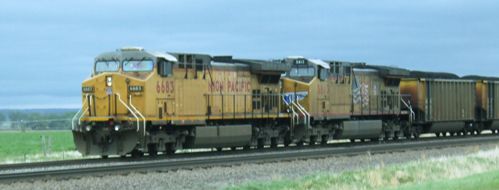 |
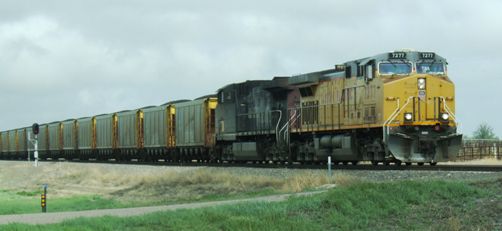 |
Almost all the locos are AC4400 or similar models. The motors in these are
AC driven rather than DC which makes them very good at delivering lots of
power with high torque at low speeds. This makes them quite different to the
high speed locos used in Britain where much smaller freight trains travel
much faster to fit in between the passenger trains. |
| The longest UK freight
trains are 50 wagons, each only about 60% of the length of a US car. US
trains have between 125 and 150 wagons in each train each carrying
100 tons of coal. They stretch well over a mile. |  |
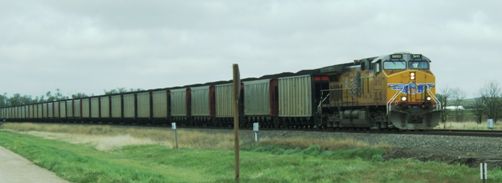 |
The locomotive on the back is usually unmanned and controlled by radio.
However this was a rare train with only a single locomotive on the front
(and another at the rear). You can tell which way a train is travelling as
the lead engine has a triangular set of 3 headlights, while the rear engine
has just one on the back. |
| Later in the day as we
travelled up US26 following the Platte River, the Oregon Trail and the
Mormon trail, we left the UP line and joined the BNSF line for a while. The
trains were just the same, just a different livery. | 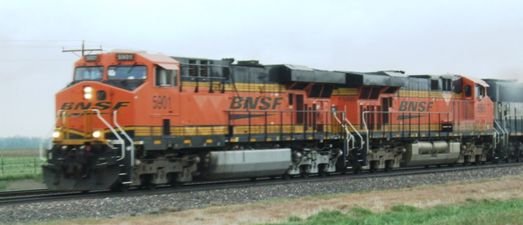 |
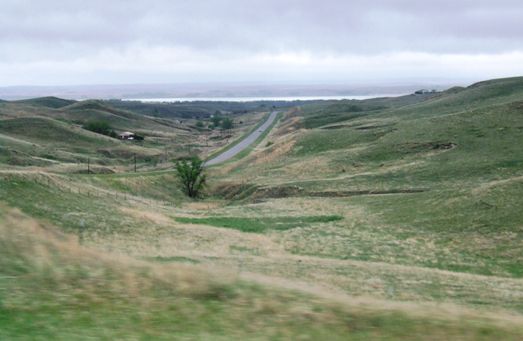 |
This is the Sand Hills region of western Nebraska. The flat plains growing
cereals have given way to a vast area of grass-covered sandy hills which is
no good for agriculture but which provides good grassland for
cattle. |
| It is a much bleaker
landscape with trees only in the protected hollows now. We realise that Nebraska is
like Kansas in that the western edge is some 3000ft higher than the eastern
edge. | 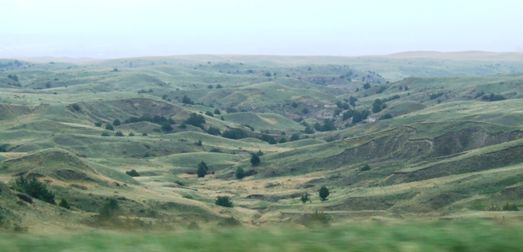 |
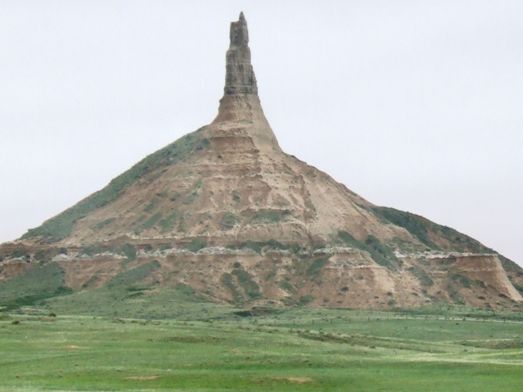 |
We stopped briefly at Chimney Rock, a peculiar natural landmark mentioned in
many pioneer accounts. It is about 320 ft from the base to the pinnacle, but
from the east it looks rather taller. For the pioneers making their way west it marks the end of the prairies and the point at which the
trails become more difficult as they approach the mountains. It has layers of volcanic ash and sandstone in
Brule clay. However it does not seem to be eroding as fast as was once feared. |
| A few miles further on is
Scotts Bluff which is part of the same geological structure, and the next
significant landmark for the pioneers. There are
interpretative centres at both places, although we only visited the one at
Chimney Rock. | 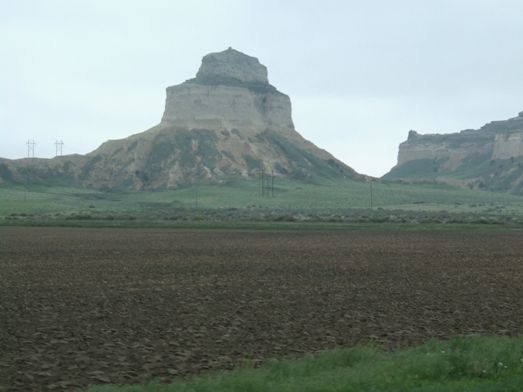 |
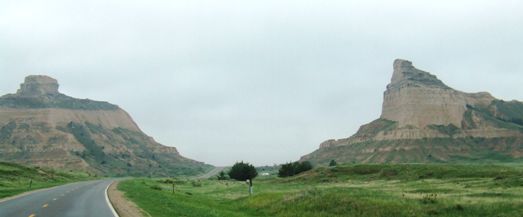 |
The town of Scotts Bluff is off to the right. This road bypasses the town
but takes you past the monuments. |
| Scotts Bluff was named
after a pioneer called Hiram Scott who died near here in 1828. | 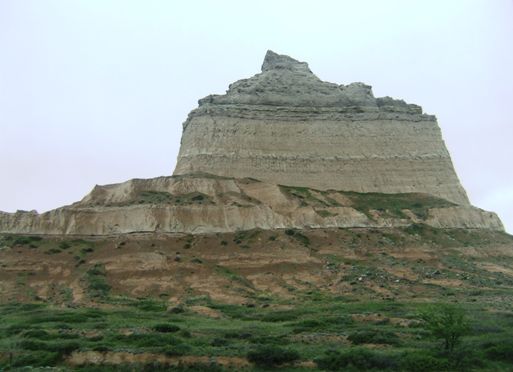 |
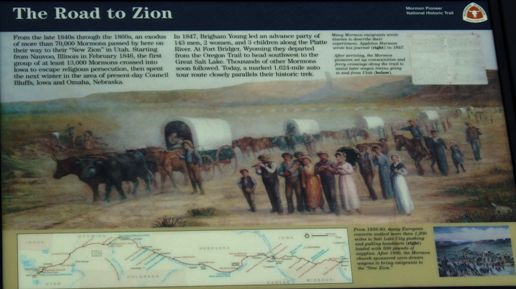 |
All along the road we have travelled today are plaques commemorating
pioneers who travelled along these trails. This particular one talks of the
more than 70,000 Mormons who migrated this way from Nauvoo in Illinois to
Utah. Their
route can be seen at the bottom. |
| The road too has become
more desolate, particularly once we crossed the border into Wyoming and
turned south at the town of Torrington heading for Cheyenne. This is an 85
mile stretch of nothing, it is 6500-7000 ft high and has no protection from
incoming weather. | 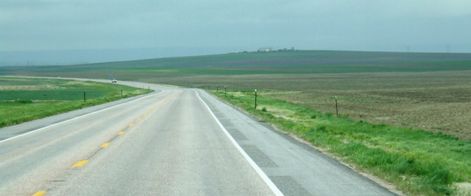 |
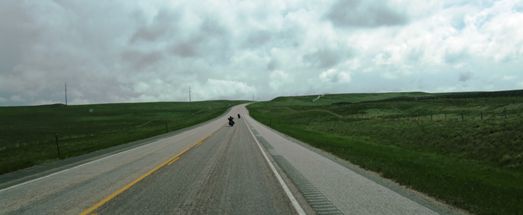 |
The wind was rising and was now blowing at 40mph from the east, and we are
travelling south. These motorbikers were working hard to stay on the road, leaning into the wind.
We slowed to 40mph as the wind threatened to blow us off the road. Worse, the
radio was warning of storms including tornadoes heading up the road we were
heading down. Fortunately we managed to slip in between them and made it
into Cheyenne without incident for the Memorial Day holiday weekend. |
|